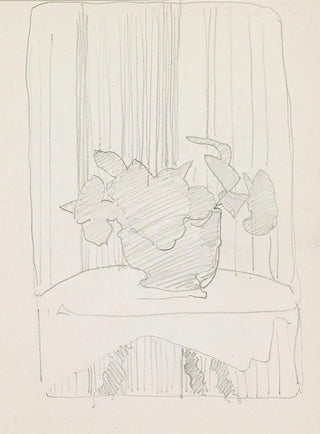Art print | Vase with flowers on a table - Reijer Stolk


View from behind

Frame (optional)
In the rich and vibrant world of 17th-century Dutch painting, the artwork "Vase with Flowers on a Table" by Reijer Stolk stands out for its delicate beauty and harmonious composition. This piece, emblematic of the floral style that gained prominence during that period, invites viewers to immerse themselves in a world where nature and art meet with rare elegance. The flowers, carefully arranged, seem to capture light in a way that evokes the fragility of ephemeral beauty. The art print of this work allows for a rediscovery of the finesse of details and the richness of colors that characterize Stolk's craftsmanship, while offering a window into the refined aesthetics of his era.
Style and uniqueness of the work
Reijer Stolk's style is characterized by striking realism, where each petal, each leaf is rendered with almost scientific precision. In "Vase with Flowers on a Table," vibrant colors and subtle contrasts highlight a floral palette that appears almost alive. The artist skillfully plays with light, creating delicate shadows that add depth to the composition. This artwork is not merely a simple depiction of flowers; it is a celebration of nature, where every element is carefully chosen to evoke a certain harmony. The arrangement of the flowers in the vase, combined with the texture of the table, creates an intimate and refined atmosphere, inviting viewers to pause and contemplate the surrounding beauty.
The artist and his influence
Reijer Stolk, although less known than some of his contemporaries, managed to leave his mark on his era through his mastery of still life. His work is often associated with a sensitivity that transcends mere realism to touch on emotion. As an artist, Stolk was influenced by the great masters of his time, but he also developed a style that is uniquely his own, blending tradition and innovation. His works, including "Vase with Flowers on a Table," are perfect examples of a deep understanding of nature and an ability to translate that understanding into art. Stolk's influence is felt not only in

Matte finish

View from behind

Frame (optional)
In the rich and vibrant world of 17th-century Dutch painting, the artwork "Vase with Flowers on a Table" by Reijer Stolk stands out for its delicate beauty and harmonious composition. This piece, emblematic of the floral style that gained prominence during that period, invites viewers to immerse themselves in a world where nature and art meet with rare elegance. The flowers, carefully arranged, seem to capture light in a way that evokes the fragility of ephemeral beauty. The art print of this work allows for a rediscovery of the finesse of details and the richness of colors that characterize Stolk's craftsmanship, while offering a window into the refined aesthetics of his era.
Style and uniqueness of the work
Reijer Stolk's style is characterized by striking realism, where each petal, each leaf is rendered with almost scientific precision. In "Vase with Flowers on a Table," vibrant colors and subtle contrasts highlight a floral palette that appears almost alive. The artist skillfully plays with light, creating delicate shadows that add depth to the composition. This artwork is not merely a simple depiction of flowers; it is a celebration of nature, where every element is carefully chosen to evoke a certain harmony. The arrangement of the flowers in the vase, combined with the texture of the table, creates an intimate and refined atmosphere, inviting viewers to pause and contemplate the surrounding beauty.
The artist and his influence
Reijer Stolk, although less known than some of his contemporaries, managed to leave his mark on his era through his mastery of still life. His work is often associated with a sensitivity that transcends mere realism to touch on emotion. As an artist, Stolk was influenced by the great masters of his time, but he also developed a style that is uniquely his own, blending tradition and innovation. His works, including "Vase with Flowers on a Table," are perfect examples of a deep understanding of nature and an ability to translate that understanding into art. Stolk's influence is felt not only in






